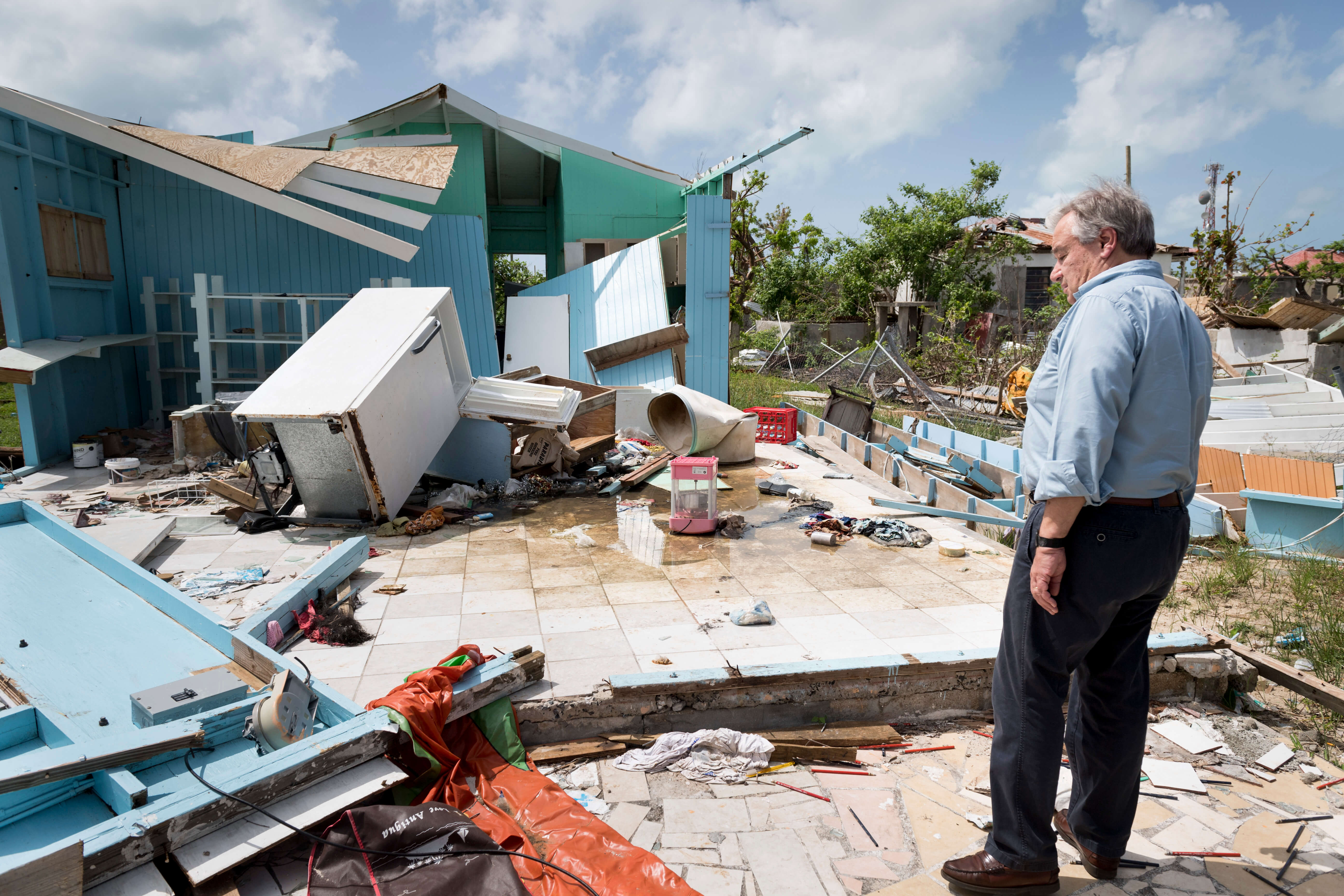Hurricane season officially ends today. And more than two months after deadly storms tore through the region, full recovery is still months or even years away for the worst-hit islands. Barbuda, for example, remains “eerily deserted,” after Irma devastated 90 percent of properties and residents evacuated to Antigua.
The longer people (and resources) stay away from the island, the harder it becomes to rebuild as damaged infrastructure continues to deteriorate. Puerto Rico is trying its best to avoid a mass exodus. The island’s already struggling economy can barely stand “brain drain” in addition to a destroyed power grid that will likely take months to fully restore.
Legislators and philanthropists are now invoking the historic Marshall Plan in their efforts to rebuild a greener Caribbean after Hurricanes Irma and Maria.
Of course, the goal for most of these islands is not only to rebuild, but to rebuild better as climate change all but guarantees more disasters with increased frequency and severity. But even in countries that haven’t been devastated by disaster, building sustainably is costly.
This week, Senator Bernie Sanders revealed a massive $146 billion recovery plan that would transition Puerto Rico to 70 percent renewable energy, including solar and wind, within 10 years. It also asks Congress to consider retiring Puerto Rico’s debt and would allocate billions to Puerto Rico and the Virgin Islands for education, health care and transportation.
“This is the closest we have to a Marshall Plan for Puerto Rico,” Ramón Luis Nieves, a former of Puerto Rico senator, told the Washington Post.
Politicians often like to compare large-scale economic rescue proposals to the historic $13 billion (about $135.4 billion in current dollar value) American initiative that famously helped rebuild Western Europe after World War II.
Sometimes the comparison has been a stretch – like in the context of Afghanistan, which was never industrialized. But in the case of the Caribbean, the comparison is more fitting, because there were actually thriving tourism industries and economies that can be rebuilt. Prior to the hurricanes, the islands actually graduated from receiving official development assistance when their gross national incomes became too high.
Now, many of the islands are at risk of re-joining the list of the world’s poorest countries, unless power is restored, properties and infrastructure are rebuilt, tourists return and the islands are resilient against future storms.
Sanders’ bill is unlikely to pass or even reach the Senate floor for a vote, according to the Washington Post, but other private actors are pursuing similarly ambitious efforts.
Puerto Rico Governor Ricardo Roselló has been talking with Tesla founder and CEO Elon Musk about restoring the island’s power with solar. Last month, Tesla successfully brought a children’s hospital in San Juan back online with solar and batteries, but restoring power to the whole island with a green power grid will take significant investment and political will.
British billionaire Richard Branson, founder of the Virgin Group, has also been in talks since September with heads of state, foundations and multilateral lenders to set up a large-scale rebuilding fund, which he’s dubbed the “Disaster Recovery Marshall Plan.”
“I think the consensus is that it’s got to be a ‘Marshall Plan for a greener, resilient Caribbean,’” Branson wrote on his blog.
“Among other things, this means building homes able to withstand sustained and catastrophic hurricane-force winds over longer periods of time. It means installing distributed power grids that don’t break down so easily and can be repaired quickly. It means restoring critical ecosystems like mangrove wetlands and coral reefs that mitigate direct impacts of storms by naturally reducing wave heights and preventing soil erosion. And perhaps most importantly, it means weaning Caribbean islands off their irresponsible and costly dependency on fossil fuels.”
Managing Director of the International Monetary Fund Christine Lagarde has already agreed to preside over debt relief negotiations. The World Bank and the Inter-American Development Bank have also agreed to finance a secretariat to manage recovery efforts, Branson told Thomson Reuters.
It’s hardly up for debate that rebuilding disaster-struck nations greener and more resilient is the smart way forward. However, the challenge remains of convincing states and private actors to work together quickly to implement these massive programs before the islands slip too deep into economic disrepair.
Even better would be if the global community could help vulnerable nations become sustainable, renewable and resilient before disaster strikes. But maybe that’s asking too much.
